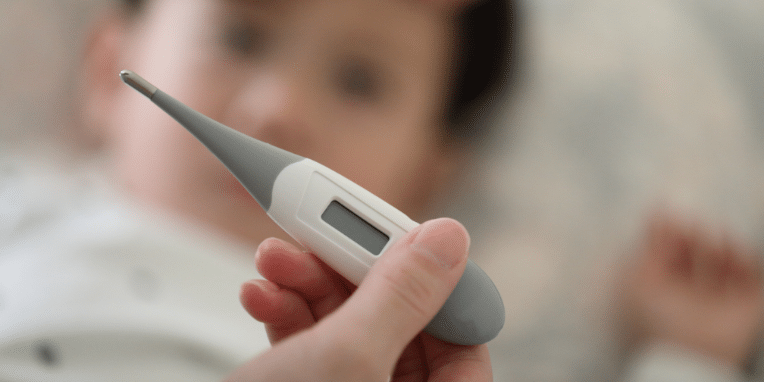
Fever is your body’s natural defense against infection – and one of the most effective ways to fight infection.
When your immune system detects a threat, your brain’s thermostat turns up the heat. The higher temperature makes it harder for bacteria and viruses to survive. The fever activates your immune system, sending out white blood cells and other “fighter” cells to destroy the infection.
What is considered a fever?
The average body temperature is 98.6°F, but “normal” body temperature varies from person to person. It can rise after eating or exercising and is often lower in the morning and higher in the late afternoon.
Infants and young children typically have slightly higher body temperatures than older children and adults, so they often have slightly higher fever temperatures.
A fever is a body temperature of 100°F or higher, but there are different levels of fever:
- Low-grade – 99.1 to 100.4°F
- Moderate-grade – 100.6 to 102.2°F
- High-grade – 102.4 to 105.8°F
What are other signs of a fever?
- Chills, feeling cold, shivering and shaking
- Body aches and headaches
- Fatigue
- Sweating
- Hot skin or flushed complexion
Additional fever symptoms in babies and children may include:
- Lack of appetite
- Earache or pulling at their ears
- Fussiness or crying
- Decreased urination
What are the most common causes of fever?
A fever has many causes and can be a symptom of almost any illness. The most common conditions that cause fever include:
- Viral infections, like the flu
- Bacterial infections
- Urinary tract infections
- Gastrointestinal (GI) infections
- Diseases that produce inflammation, such as rheumatoid arthritis
- Reactions to vaccines or medications
Learn More: 7 Tips for a Speedy Flu Recovery
When to call a healthcare provider
In adults, fevers less than 103°F (with no other symptoms) are usually not a cause for concern. But if your fever increases above that level, contact your healthcare provider.
In children, call your doctor if:
- Their fever is higher than 104°F.
- Their fever lasts more than five days.
- Medications (acetaminophen or ibuprofen) don’t break the fever.
- They have trouble breathing or urinating.
Seek immediate medical attention or call 911 if you or a loved one have a fever combined with any of the following symptoms:
- Seizures or convulsions
- Difficulty breathing
- Pain or tenderness in your abdomen
- Severe headache
- Nausea or vomiting
- Stiff neck
- Difficulty waking or extreme sleepiness
- Confusion or irritability
- Altered speech and/or strange behavior
- Light irritates your eyes
- Fever rash
How to treat fever at home
You don’t need to take medication for a low-grade fever since your body is using the fever to fight infection.
If you’re uncomfortable and your temperature is above 101°F, these steps can help you feel better and break the fever.
- Drink plenty of fluids to help cool your body and prevent dehydration.
- Get plenty of rest.
- Take over-the-counter (OTC) medications such as ibuprofen (Advil or Motrin), acetaminophen (Tylenol), and naproxen (Aleve) to help relieve head and body aches and lower your temperature.
- Eat light foods that are easy to digest.
- Take a lukewarm bath (about 98°F) or apply damp washcloths to the forehead and wrists.
Good Life Family Medicine – Caring for Your Whole Family’s Health
While a fever can make you feel uncomfortable, it’s also a sign that your body is working properly and your immune system is fighting an infection.
If you or your child has a higher fever that hasn’t passed within a few days, contact your healthcare provider. There may be underlying conditions you need to have checked out. Good Life Family Medicine in College Station, Texas, provides care for your whole family and offers same-day appointments. Book an appointment online or call today!




